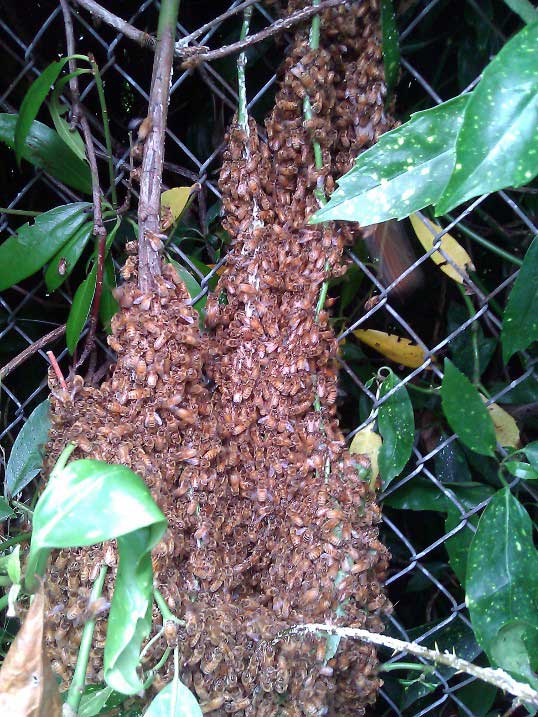Find a honey bee swarm?
PSBA volunteer beekeepers relocate honey bee swarms as a free service in the King County area.
Click the link below to locate a beekeeper near you:
PSBA 2023 Swarm List
For swarms in Snohomish county start here. (external link)
For swarms in Pierce county start here. (external link)
For swarms in Snoqualmie valley area start here. (external link)
Please note: Some beekeepers on the list can perform additional services that may incur cost, such as; removing other stinging insects (yellow jackets, bumble bees, etc.), or removing established honey bee colonies inside a structure. Ask for an estimate if you are inquiring about one of these services.
Beekeepers
If you need information on how to prevent and manage swarms, READ THIS. If you need help catching a swarm, refer to the swarm list at link above.
PSBA members can get a link to the swarm list application at our Jan, Feb, and March meetings (in-person or virtual).
What does a honey bee swarm look like?
Honey bees swarms can be down low on a bush or high up on a tree limb. There will not be a built nest surrounding them, but rather a cluster of bees hanging from a limb, branch or other object.
Are Swarms Dangerous?
Honey bee swarms are not dangerous, but unless you are an experienced beekeeper, please do not attempt to disturb/displace the swarm. These bees are simply in the process of finding a new home and the beekeeper that you call will give them just that, a nice hive in a proper location!
Please do not spray the bees w/ pesticides, insecticides or even water!
Wait for a beekeeper to come and take them away. These are typically gentle insects that are a huge benefit to the plants we have in our gardens and to the foods we eat! The only time you’ll encounter an angry bee (or other insect/animal for that matter) is if you disturb it.
In fact, if you have a swarm, consider yourself lucky to be experiencing this marvel of nature!
Wasps or Bees?
Wasps are meat eaters and eat other insects (including bees!), while bees collect pollen for protein. If you have something that doesn’t quite sound like a swarm then you might have a wasp nest. Click here for a PDF resource to help on IDing wasps.
